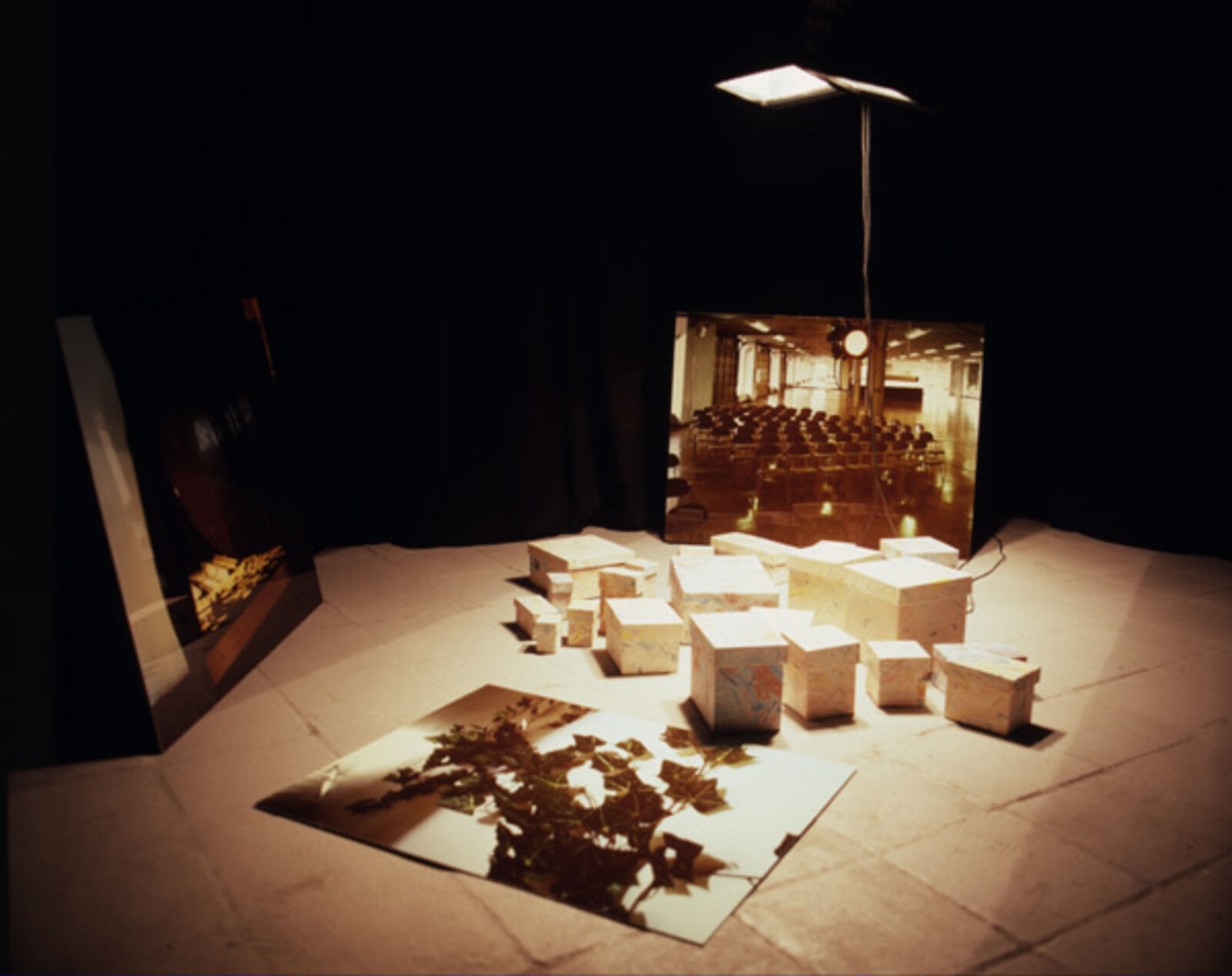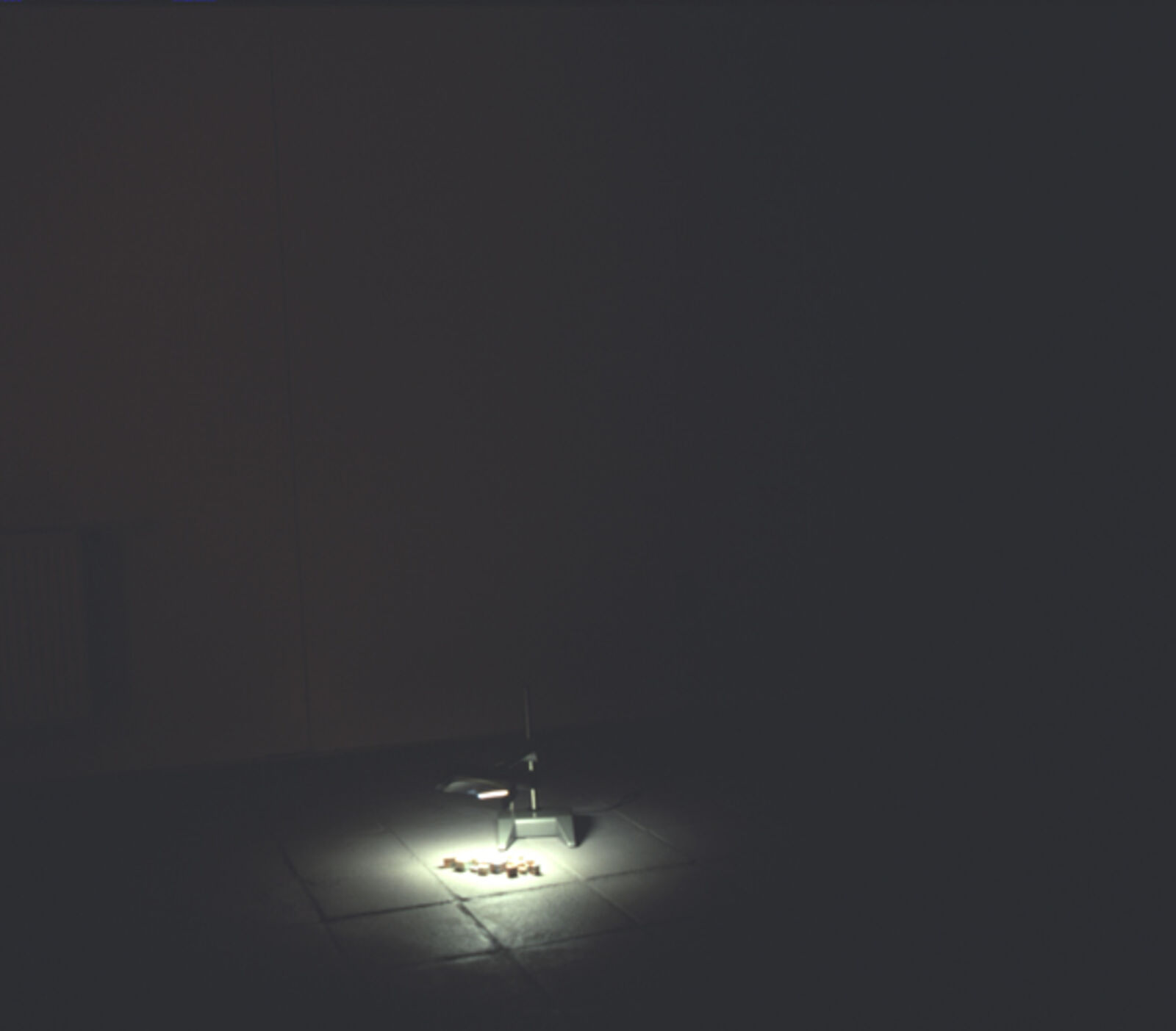Hermann Pitz "Hermann Pitz"
17.01–08.02.1987
de Appel, Prinseneiland 7, Amsterdam
de Appel, Prinseneiland 7, Amsterdam

Installation I
© Hans Sonneveld
© Hans Sonneveld

Installation II
© Hans Sonneveld
© Hans Sonneveld

Installation III
© Hans Sonneveld
© Hans Sonneveld

Installation IV
© Hans Sonneveld
© Hans Sonneveld
‘The work of Hermann Pitz (Oldenburg, 1956) is directly related to the space in which it is created and presented. It consists of detail-shots: with photographs, slides, maquettes, and models he summarizes what can be observed from one angle in our vision. This can be part of a city, in bird's-eye view, built on a small scale, or a picture of a view from a window, or even the casts of possessions Pitz has upon him while travelling: his camera, a pocket knife, a notebook. At the presentation of the work, a number of different things happen: the models, in contrast with the surrounding space, offer a focal point: the space thickens, as it were, while at the same time, it seems to grow larger because of the difference in scale. For instance, Pitz has placed a 35 mm slide in a factory hall, or placed his maquettes (like the camera, etc.) in a large forest on a spot where other artists would build a monument. From the use of models, maquettes, photographs and casts the distance Pitz aims at is evident. Even though he sees his objects as memories, he immediately adds: 'as everyone carries with them'. The casts of his own possessions have an autobiographical character and together form a mosaic of the maker, and here, too, Pitz emphasizes: 'not of one unique person, but of a typical Mideuropean'. 'Showing indirectly' is another aspect of the same distance, which covers a high degree of subtlety: a sculpture which consists of three walls has a window covered with stretched cloth as the fourth wall. A thin light-filter (used by film-makers to shield against strong sunlight) stretched across a window makes the view become distant and hover between the directly visible and the photographed reality. The themes Pitz uses do not stand isolated in the history of the visual arts and link in with the in romanticism much used motives of studio-interiors. The picture (in those cases usually the painting, or the still empty canvas on the easel) is confronted with the view from the window. The meaning of such paintings far exceeds the literally visible: it is the different kinds of light, and the thoughts about the visible versus the Idea more than the competition of the painter with nature. In Pitz's series a view, photographed once, becomes smaller and smaller in various installations, and thus, slowly, moves into the background. Contrary to the 19th-century artist, Pitz is a traveller who makes every new location his studio, settles down, unpacks his memories, and gives them a place in the new surroundings which in its turn - as a photograph or a model - can be taken along to new places.’ (‘Memories of Hermann Pitz’, Newsletter De Appel, 1 (1986) 5.)